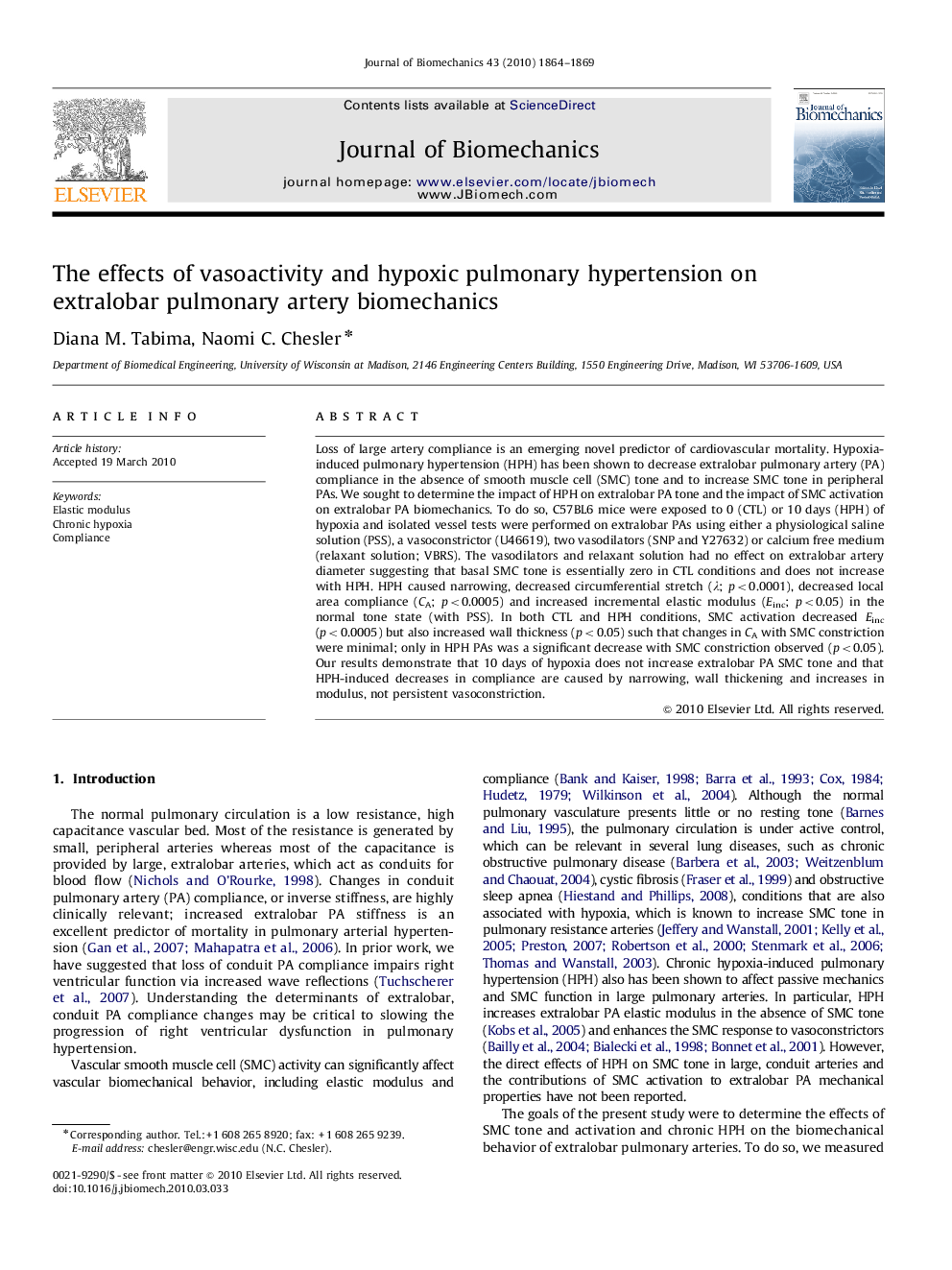| Article ID | Journal | Published Year | Pages | File Type |
|---|---|---|---|---|
| 873316 | Journal of Biomechanics | 2010 | 6 Pages |
Loss of large artery compliance is an emerging novel predictor of cardiovascular mortality. Hypoxia-induced pulmonary hypertension (HPH) has been shown to decrease extralobar pulmonary artery (PA) compliance in the absence of smooth muscle cell (SMC) tone and to increase SMC tone in peripheral PAs. We sought to determine the impact of HPH on extralobar PA tone and the impact of SMC activation on extralobar PA biomechanics. To do so, C57BL6 mice were exposed to 0 (CTL) or 10 days (HPH) of hypoxia and isolated vessel tests were performed on extralobar PAs using either a physiological saline solution (PSS), a vasoconstrictor (U46619), two vasodilators (SNP and Y27632) or calcium free medium (relaxant solution; VBRS). The vasodilators and relaxant solution had no effect on extralobar artery diameter suggesting that basal SMC tone is essentially zero in CTL conditions and does not increase with HPH. HPH caused narrowing, decreased circumferential stretch (λ; p<0.0001), decreased local area compliance (CA; p<0.0005) and increased incremental elastic modulus (Einc; p<0.05) in the normal tone state (with PSS). In both CTL and HPH conditions, SMC activation decreased Einc (p<0.0005) but also increased wall thickness (p<0.05) such that changes in CA with SMC constriction were minimal; only in HPH PAs was a significant decrease with SMC constriction observed (p<0.05). Our results demonstrate that 10 days of hypoxia does not increase extralobar PA SMC tone and that HPH-induced decreases in compliance are caused by narrowing, wall thickening and increases in modulus, not persistent vasoconstriction.
